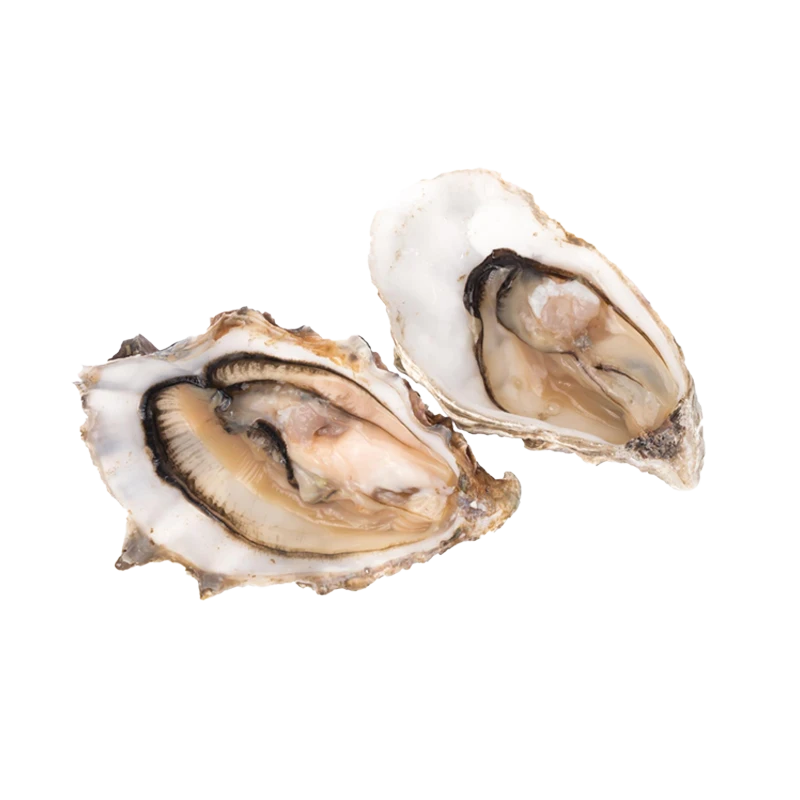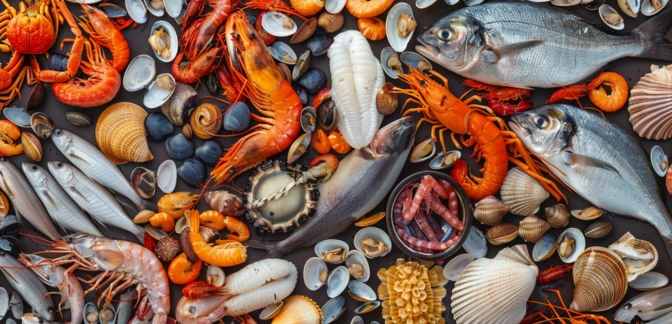Oysters — Nutrients, Health Benefits, And Shopping Tips

Written by Listonic Team
Last update on September 5, 2024
Nutrition facts
Nutrition facts
Amount per 100 g
Calories
🔥 68 kcal
| Nutrition per: 100 g | Value | % Daily Value* |
|---|---|---|
| Carbs | 5 g | 1.82% |
| Fiber | 0 g | - |
| Sugars | 0 g | - |
| Glycemic Index | 0 | - |
| Protein | 7 g | 14% |
| Sodium | 90 mg | 3.91% |
| Total Fat | 3 g | 3.85% |
*The % of Daily Value (DV) tells you how much a nutrient in a serving of food contributes to a daily diet. 2,000 calories a day is used for general nutrition advice.
3 g
🥕 Low Fat Content
Did you know?
Health benefits
- High in protein, essential for muscle growth, repair, and overall body function.
- Rich in omega-3 fatty acids, which support heart health, reduce inflammation, and improve brain function.
- Contains essential vitamins and minerals such as zinc, iron, Vitamin B12, and selenium, which support immune function, energy metabolism, and overall health.
- Low in calories and fat, making them a nutritious option for weight management and overall health.
- Supports bone health due to their high calcium and phosphorus content.
- Rich in antioxidants such as Vitamin C and selenium, which help protect the body from free radicals and reduce inflammation.
Health risks
- Risk of contamination with harmful bacteria, viruses, or toxins such as Vibrio or norovirus, particularly if the oysters are consumed raw or undercooked.
- High cholesterol content in oysters, which can be a concern for individuals with high cholesterol or heart disease when consumed in large quantities.
- Potential for allergic reactions in individuals with shellfish allergies, causing symptoms like itching, swelling, or anaphylaxis.
- Environmental concerns related to the sustainability of oyster harvesting and its impact on marine ecosystems.
How to choose oysters
Live oysters should be closed tightly or close when tapped, indicating they are alive and fresh. The shells should be moist and free of cracks.
Oysters that are open and do not close when tapped should be avoided, as this is a sure sign they are dead and no longer safe to eat. Any oysters with a fishy or overly salty smell should also be avoided, as fresh oysters should have a clean, briny scent.

How to store oysters
Fresh oysters should be stored in the refrigerator, covered with a damp cloth. Keep them in the coldest part of the fridge and ensure they are not submerged in water. Properly stored, fresh oysters can last for up to five days.
Exposing oysters to fresh water or ice can kill them and affect their taste. Avoid sealing them in airtight containers as they need to breathe. Always check for any open shells and discard those that do not close when tapped.
✅ Extra Tip
How long do they last?
Oysters can last for 1-2 days in the refrigerator when stored in an airtight container. For the best quality, keep them on ice and ensure they remain cold. Cooked oysters should be consumed within 2-3 days. For longer storage, oysters can be frozen for up to 3 months.
What to do with leftovers?
Leftover oysters can be used in a variety of flavorful seafood dishes. Grill them with garlic butter and herbs for a simple and elegant appetizer, or chop them and add to a seafood stew or chowder for a rich and briny flavor. Oysters are also great when baked with breadcrumbs and cheese for classic Oysters Rockefeller.
Use oysters in a seafood pasta with a cream or tomato sauce, where their tender texture pairs well with the noodles. If you have a lot of oysters, consider making a batch of oyster stuffing with breadcrumbs, onions, and celery, perfect for serving with roast meats. Oysters can also be served raw on the half shell with a squeeze of lemon and a dash of hot sauce. For a quick appetizer, fry oysters in a light batter and serve with a tangy dipping sauce or add them to a seafood salad with greens and a citrus vinaigrette.
👨⚕️️ Medical disclaimer
Discover products from other categories
Listonic Team
Fact-checked
Our editorial team checked this article to make sure it was accurate at the time of publishing it.
Get the top-rated shopping list app on your phone!







